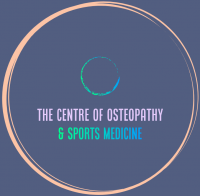Spinal manipulation is a technique that involves the application of force to the spine to help relieve pain and improve overall function. It is often used by osteopaths and chiropractors as a non-invasive treatment option for a variety of conditions, including back pain, neck pain, and headaches.
But what are the actual benefits of spinal manipulation, and what physiological effects does it have on the body? In this article, we'll take a closer look at this technique and explore the science behind its effectiveness.
- BENEFITS OF SPINAL MANIPULATION
Spinal manipulation has been shown to offer a number of benefits, including:
Pain Relief
One of the primary benefits of spinal manipulation is pain relief. By applying force to specific points along the spine, osteopaths can help reduce pain and discomfort in the affected area. This can be particularly helpful for individuals with chronic pain conditions, such as fibromyalgia.
Improved Joint Mobility
Spinal manipulation can also help improve joint mobility, which can be especially beneficial for individuals with conditions that affect joint movement. By applying force to the spine, osteopaths can help improve joint mobility and reduce stiffness and discomfort.
Reduced Muscle Tension
In addition to improving joint mobility, spinal manipulation can also help reduce muscle tension. This can be particularly helpful for individuals with conditions that cause muscle spasms or tightness.
Improved Overall Function
Finally, spinal manipulation can help improve overall function by addressing underlying issues that may be contributing to pain or discomfort. By addressing these issues, osteopaths and other healthcare professionals can help patients achieve better overall health and wellness.
- PHYSIOLOGICAL EFFECTS OF SPINAL MANIPULATION
So, what physiological effects does spinal manipulation have on the body? Here are a few key effects:
Improved Nerve Function
Spinal manipulation can help improve nerve function by reducing pressure on the nerves that run through the spinal column. By doing so, osteopaths can help alleviate symptoms associated with nerve dysfunction, such as tingling, numbness, and weakness.
Increased Blood Flow
Another physiological effect of spinal manipulation is increased blood flow. By improving circulation, spinal manipulation can help promote healing and reduce inflammation in the affected area.
Reduced Inflammation
Spinal manipulation can also help reduce inflammation by promoting the release of anti-inflammatory substances in the body. This can be particularly helpful for individuals with conditions that cause inflammation.
Improved Range of Motion
Finally, spinal manipulation can help improve range of motion by reducing stiffness and improving joint mobility. This can be especially beneficial for individuals with conditions that affect joint movement.
- CONCLUSION
Overall, spinal manipulation is a safe and effective treatment option for a variety of conditions. By addressing underlying issues and promoting healing in the affected area, osteopaths can help patients achieve better overall health and wellness. If you're experiencing pain or discomfort in your back, neck, or other areas of your body, consider speaking with a qualified osteopath to see if spinal manipulation may be a viable treatment option for you!

